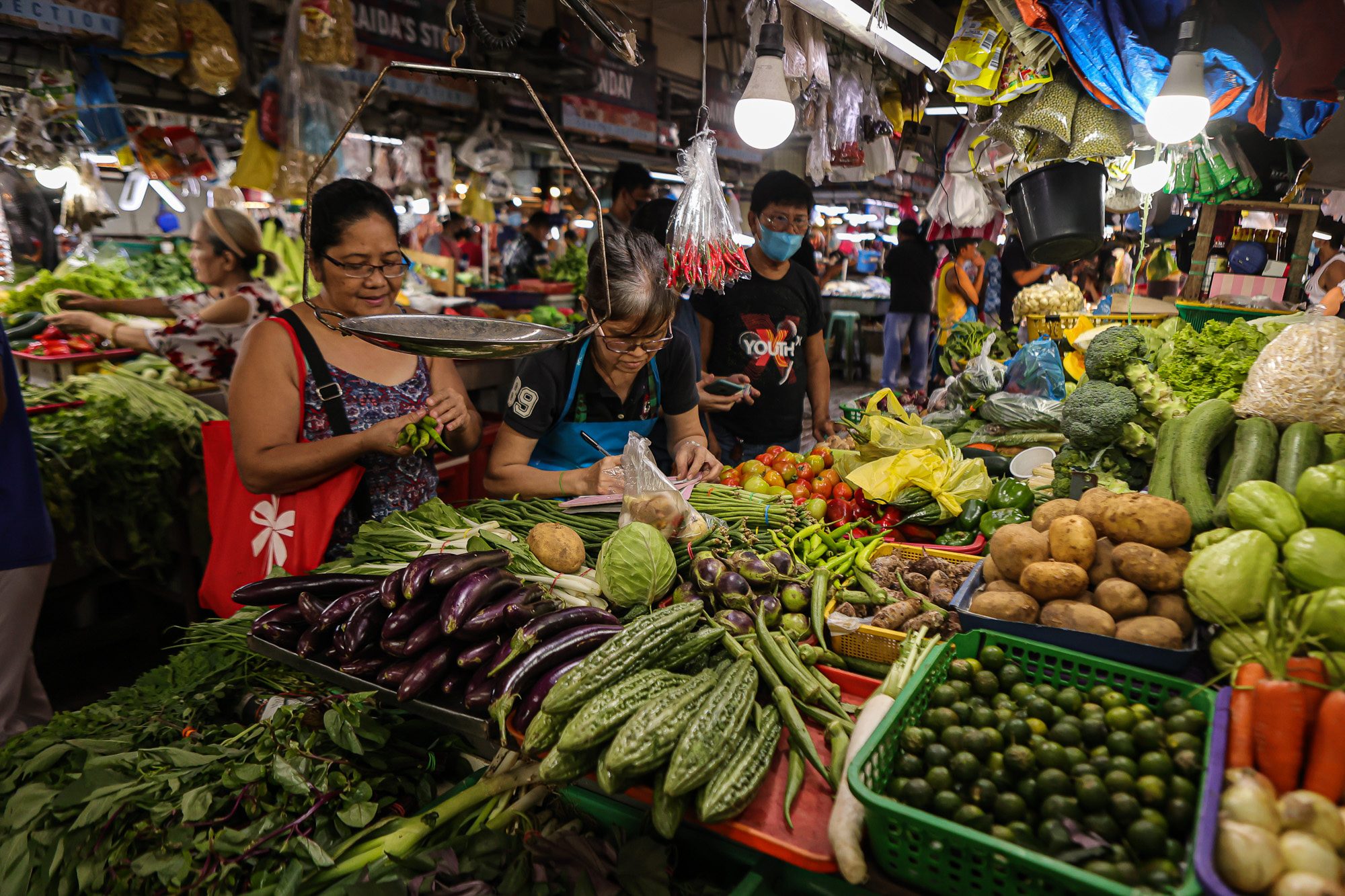SUMMARY
This is AI generated summarization, which may have errors. For context, always refer to the full article.

MANILA, Philippines – The Philippines’ inflation rate slightly eased to 8.6% in February, but in Metro Manila alone, prices accelerated at a faster pace during the month.
The latest national figure reported by the Philippine Statistics Authority on Tuesday, March 7, is marginally lower than the surprise 8.7% print last January.
National Statistician Dennis Mapa attributed the slowdown to lower transportation costs, which declined to 9% in February from 11.1% in January.
A year ago or in February 2022, the country’s inflation was just at 3%.
The National Capital Region (NCR) differed from the national trend, posting a slightly higher inflation rate of 8.7% last February from 8.6% in January.
In contrast, areas outside NCR saw a lower inflation rate of 8.5% in February from 8.7% in January.
Inflation in Metro Manila is up 8.7% up vs 8.6%.
— Ralf Rivas (@RalfRivas) March 7, 2023
Inflation in areas outside NCR slows to 8.5% vs 8.7%.
Western Visayas has highest figure at 10.8%, Eastern Visayas lowest at 6.3%. pic.twitter.com/WIHPnZqpI0
The Philippines’ inflation rate is the highest so far in Southeast Asia for February. Its neighbors Indonesia and Vietnam saw much lower figures of 5.5% and 4.3%, respectively.
Other countries in Southeast Asia have yet to report figures for the month.
Core inflation figures also muddle the picture. Core inflation, which takes out volatile items like food and petroleum, accelerated to 7.8% in February from January’s 7.4%. The latest figure is the highest since March 1999’s 8.1%.
Rethinking strategies
In a statement, National Economic and Development Authority Secretary Arsenio Balisacan highlighted that energy and food prices remain a concern, accounting for 1 and 0.9 percentage points of the overall figure, respectively.
“We must rethink our strategies to combat rising food prices. The country’s current high inflation is largely driven by domestic, supply-side constraints. Agricultural imports were ill-timed and food supplies have been inadequate. The solution is to get to the root of the problem, including fixing the bottlenecks along all segments of the agricultural value chain,” Balisacan said.
Inflation remaining elevated in the Philippines despite the central bank aggressively hiking rates has illustrated that monetary policy has done its part in addressing price shocks and needs a follow-through from other government agencies.
In February, the Bangko Sentral ng Pilipinas (BSP) hiked interest rates to 6%, the highest since 2008, as it anticipated that inflation would average at 6.1% for the entire 2023 – significantly higher than its initial outlook of 4.5%.
In a tweet, ING Bank Manila senior economist Nicholas Mapa said that while inflation may remain sticky due to food prices staying elevated, the BSP “could be tapping out soon.”
For Bank of the Philippine Islands chief economist Jun Neri, the BSP may not necessarily pause interest rate hikes, as factors like the United States’ inflation rate, rising Philippine core inflation, and foreign exchange rates will have to be factored in.
Rizal Commercial Banking Corporation chief economist Michael Ricafort said there could be a chance that inflation has already peaked in the first quarter and may gradually ease. – Rappler.com
Add a comment
How does this make you feel?
![[EDITORIAL] Apat na taon na lang Ginoong Marcos, ‘di na puwede ang papetiks-petiks](https://www.rappler.com/tachyon/2024/07/animated-bongbong-marcos-2024-sona-day-carousel.jpg?resize=257%2C257&crop=280px%2C0px%2C720px%2C720px)
![[In This Economy] Delulunomics: Kailan magiging upper-middle income country ang Pilipinas?](https://www.rappler.com/tachyon/2024/07/in-this-economy-upper-middle-income-country.jpg?resize=257%2C257&crop=421px%2C0px%2C1080px%2C1080px)

![[EDITORIAL] Marcos Year 2: Hilong-talilong](https://www.rappler.com/tachyon/2024/07/animated-bongbong-marcos-2nd-sona-carousel.jpg?resize=257%2C257&crop=136px%2C0px%2C720px%2C720px)
![[Newspoint] A fighting presence](https://www.rappler.com/tachyon/2024/07/thought-leaders-a-fighting-presence.jpg?resize=257%2C257&crop=441px%2C0px%2C1080px%2C1080px)
There are no comments yet. Add your comment to start the conversation.